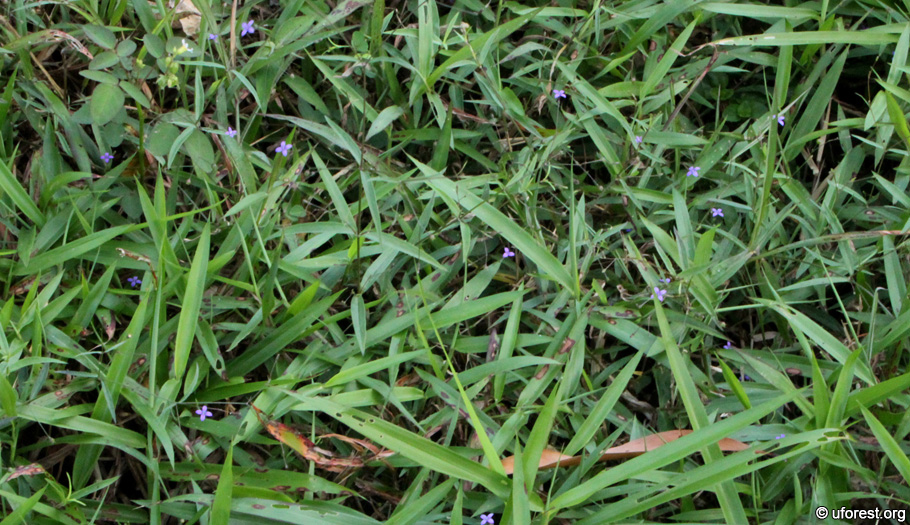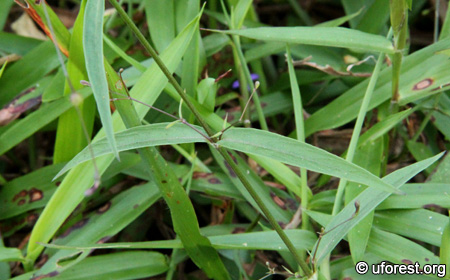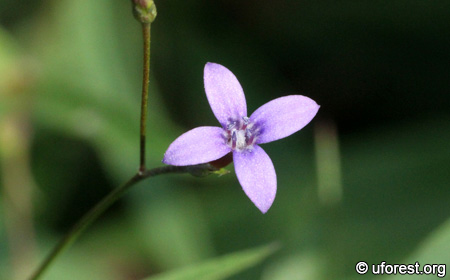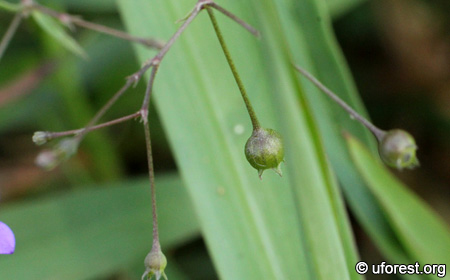| Etymology | Genus | After Henrik Bernhard Oldenland, a Danish botanist |
|---|---|---|
| Species | Related or similar; reference to plant unknown | |
| Family | Rubiaceae | |
| Synonyms | Hedyotis dichotoma K.D.Koenig ex Roth, Oldenlandia dichotoma (K.D.Koenig ex Roth) Hook.f. | |
| Common Names | Kalata-kalata | |
| Status | Native: Vulnerable | |
| Form | Herb | |
| Native Distribution | Tropical Africa, Madagascar, western Asia down to Singapore | |
Diagnostics:
Oldenlandia affinis ssp. (subspecies) affinis is a sun-loving plant that can be found in open areas. It is very difficult to find the plant among grasses and other plants because of its thin stem and leaf blades, so the best way is to watch out for its minute purple flowers.
Compared to other similar looking Oldenlandia, the flowering stalks of Oldenlandia affinis branches extensively (Henderson, 1959). I find it easier to know that O. affinis is the only one which bears purple flowers though.
Interesting Facts:
The natural habitat of Oldenlandia affinis ssp. affinis in Singapore is at dry sandy coastal areas (Keng, 1990), but it has obviously spread inland since. The only place I have seen his plant is in Bidadari Cemetery, which is slated to be cleared for housing development in 2013.
The first cyclotide (disulifide rich peptides from plants) was isolated and described from Oldenlandia affinis (Pelegrini et al., 2007). The drug is used as a traditional medicine in Africa to shortern labor time by inducing strong contractions.

The best way to find this wild flower among the grasses is to look for its tiny purple flowers.

Form of the plant; having thin stem and narrow leaves.

The leaves are opposite are opposite and narrow.

Flowers can be bright purple or blue.

The fruit is a globose capsule.
References
Henderson MR. (1959) Malayan Wild Flowers: Dicotyledons. Malayan Nature Society, Kulau Lumpar, Malaysia. 478 pp.Keng H. (1990) The Concise Flora of Singapore: Gymnosperms and Dicotyledons. Singapore University Press, National University of Singapore, Singapore. 364 pp.
Pelegrini PB, BF Quirino & OL Franco. (2007) Plant cyclotides: An unusual class of defense compounds. Peptides, 28: 1475-1481.
Author: Siyang
Posted: 2013-02-03 / Modified: 2017-12-25